Did you know that Lepismium bolivianum, also known as the Forest Cactus, is a popular houseplant in the United Kingdom? This epiphytic cactus, native to the Bolivian rainforest, has gained popularity for its unique appearance and ease of care. With its trailing foliage and tropical vibes, the Bolivianum Forest Cactus has become a favorite among indoor cactus enthusiasts in the UK.
Appearance of Lepismium bolivianum (Forest Cactus)
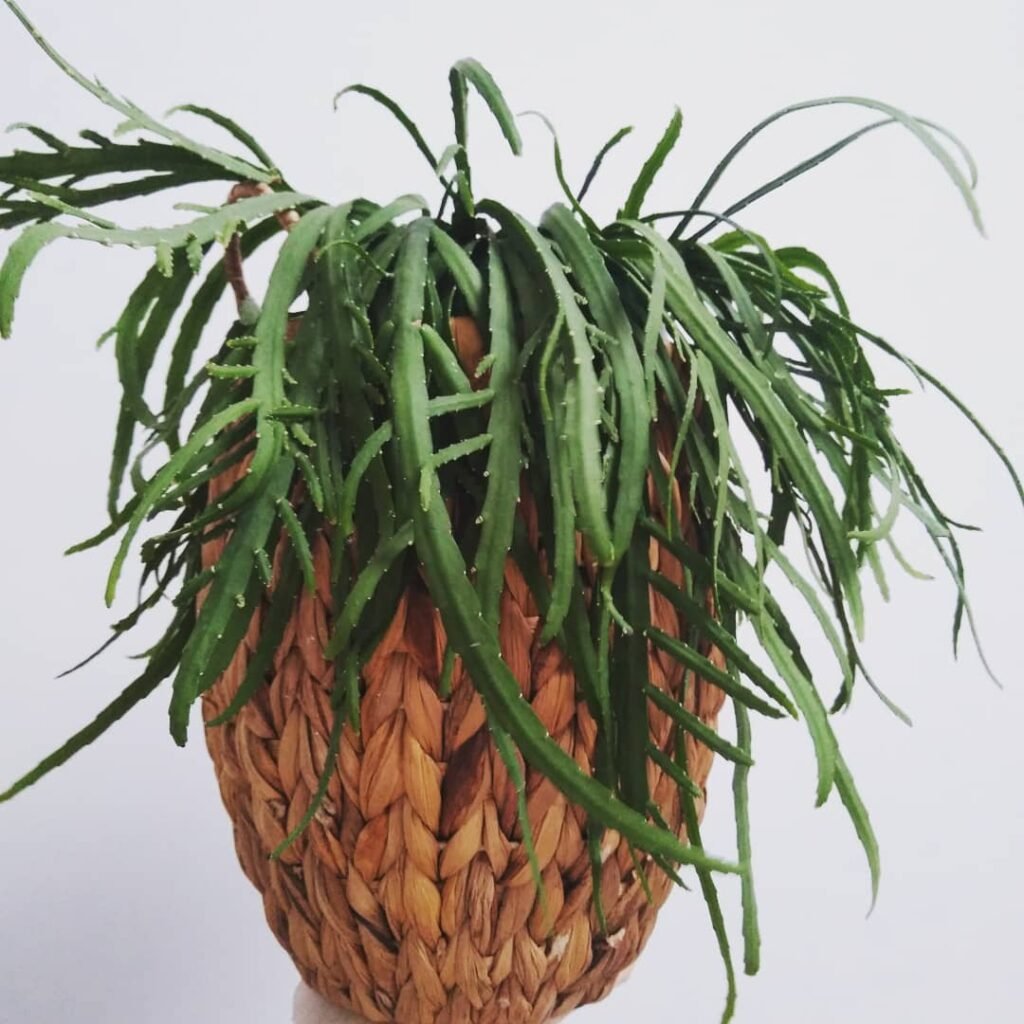

Lepismium bolivianum, often referred to as the Forest Cactus, is a captivating tropical plant hailing from the rich landscapes of Bolivia. Diverging from the classic cactus image, this particular species boasts a unique charm with its flat, fleshy foliage. Unlike its desert cousins, it prefers to dangle gracefully from pots, presenting a stunning cascade of greenery that sets it apart in any plant collection.
One of the most striking features of the Lepismium bolivianum is its lack of spines, a common characteristic associated with cacti. This absence not only makes it safer to handle but also contributes to its distinctive look, making it an intriguing addition to any indoor garden. The foliage itself is a lush, deep green, possessing a smooth texture that catches the eye and adds a touch of elegance to its surroundings.
In its own understated way, the Forest Cactus occasionally offers a delightful surprise in the form of pinkish-white flowers. These blooms add a splash of subtle colour, enhancing the plant’s natural beauty and providing a visual treat for the attentive gardener.
 Did you know that the Lepismium bolivianum, or Forest Cactus, is part of the epiphytic family, meaning it naturally grows on other plants or trees rather than in soil? This fascinating survival strategy allows it to thrive in diverse environments, making it an exceptionally adaptable houseplant for your indoor garden.
Did you know that the Lepismium bolivianum, or Forest Cactus, is part of the epiphytic family, meaning it naturally grows on other plants or trees rather than in soil? This fascinating survival strategy allows it to thrive in diverse environments, making it an exceptionally adaptable houseplant for your indoor garden.
Light Requirements for Lepismium bolivianum (Forest Cactus)

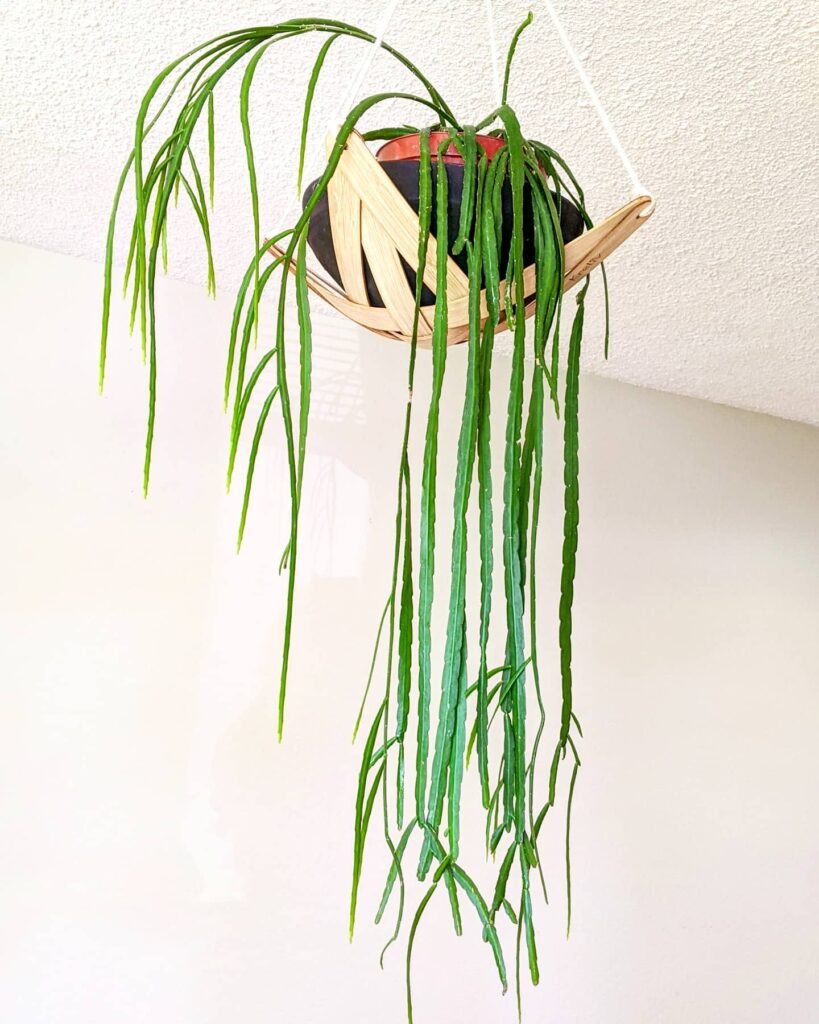
Lepismium bolivianum, also known as the Forest Cactus, is a stunning indoor cactus plant that thrives in bright, indirect sunlight. To ensure optimal growth and health, it’s important to provide the right amount of light for this tropical houseplant.
Place your Lepismium bolivianum near a window where it can receive plenty of natural light. However, be cautious to avoid direct sun exposure, as it can cause sunburn. The ideal location is where the plant can bask in bright, indirect light throughout the day.
This forest cactus can tolerate some shade, but it will grow best in bright, indirect light. Avoid placing it in low-light areas, as this can lead to leggy growth and poor overall health. By providing the right amount of light, you can ensure that your Lepismium bolivianum thrives and displays its beautiful cascading foliage.

Watering Tips for Lepismium bolivianum (Forest Cactus)
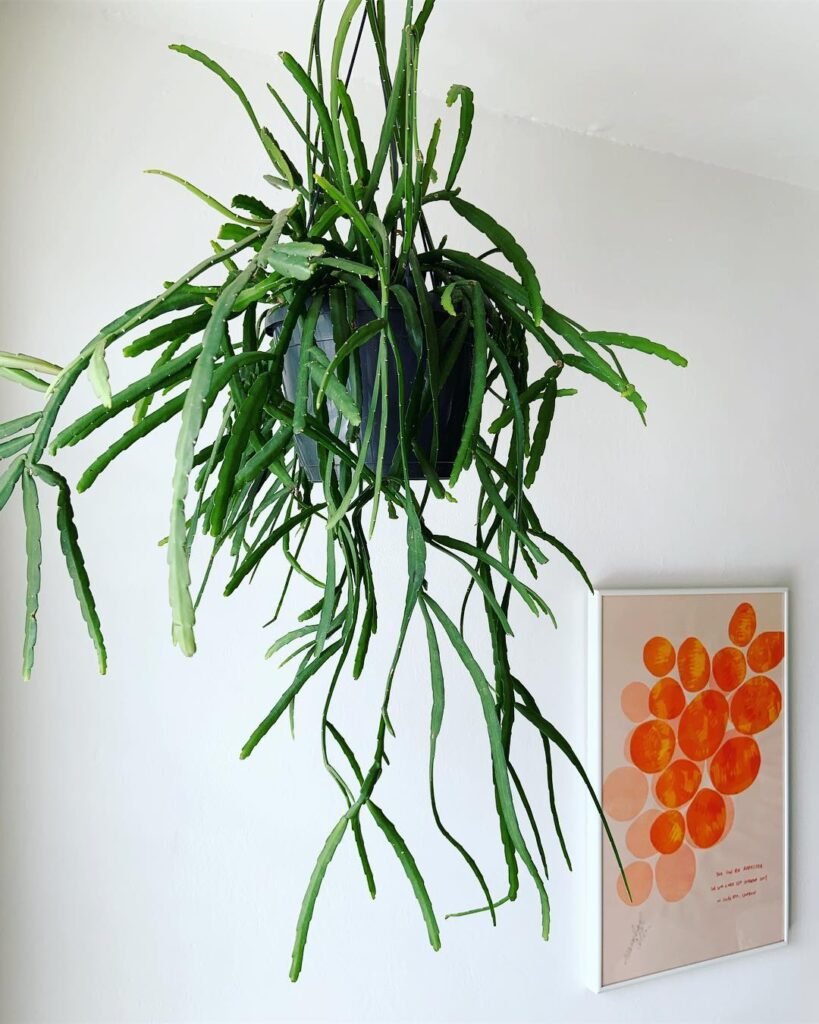
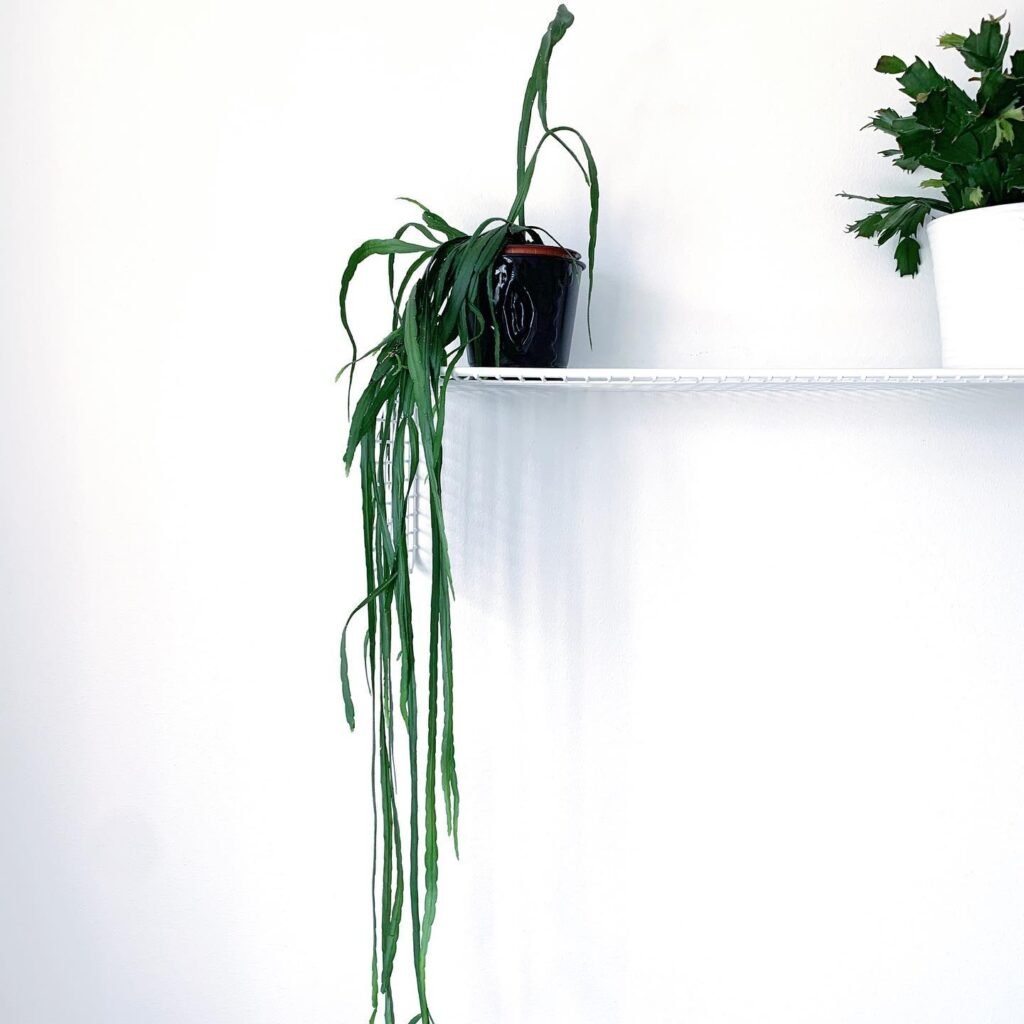
When it comes to watering Lepismium bolivianum, it’s important to strike a balance. This Forest Cactus is a succulent, meaning it stores water in its fleshy foliage. Allow the top half of the soil to dry out between waterings, and then thoroughly water the plant until water drains out of the bottom of the pot.
During the winter months, reduce watering frequency, as the plant’s growth slows down. Overwatering can lead to root rot, so it’s better to underwater this cactus than to overdo it. By following this watering routine, you can ensure the health and well-being of your Lepismium bolivianum, promoting optimal growth and vibrant foliage.

Fertilizing and Soil for Lepismium bolivianum

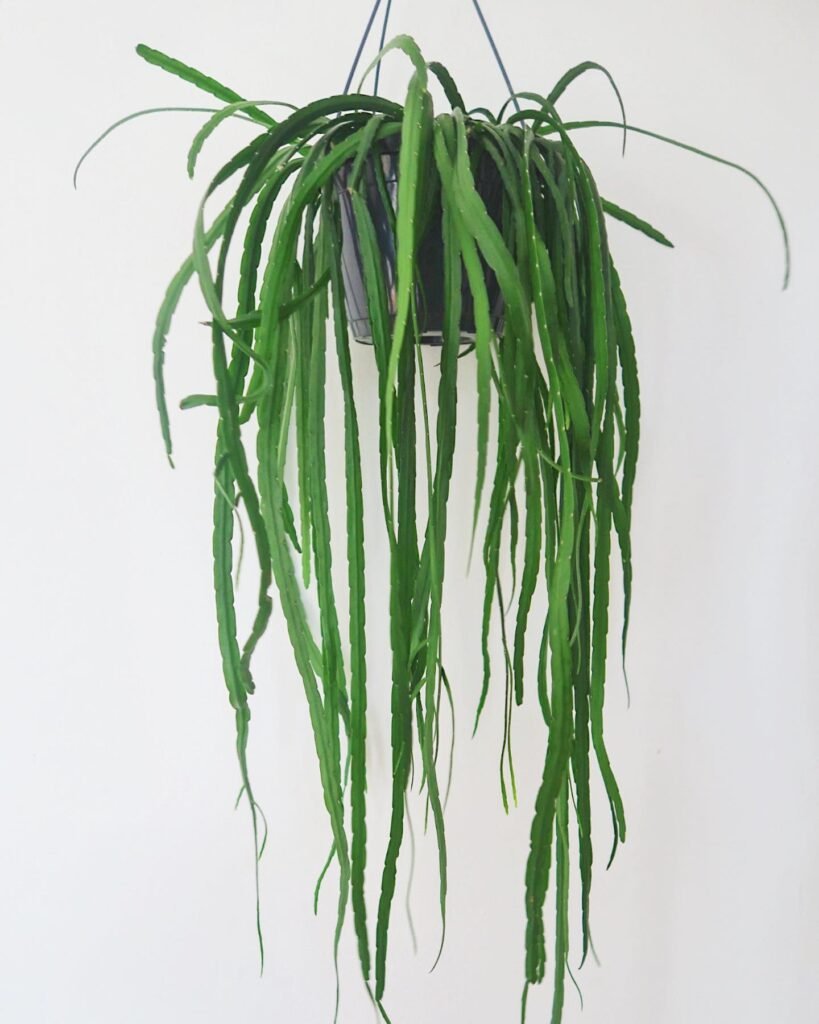
To ensure your Lepismium bolivianum, affectionately known as the Forest Cactus, flourishes, it’s essential to focus on two fundamental aspects of its care: the soil it’s planted in and its fertilisation schedule. Let’s delve into how to cultivate the ideal environment for this distinctive indoor plant.
The cornerstone of nurturing a healthy Lepismium bolivianum lies in selecting the right soil. This plant thrives in well-draining soil, crucial for avoiding waterlogged roots and the subsequent risk of rot. I recommend opting for a cactus and succulent potting mix, specifically designed to provide the excellent drainage this cactus needs. Such mixes are crafted with ingredients that ensure excess water drains away efficiently, safeguarding the plant’s root health and averting moisture-related complications.
When it comes to fertilising your Forest Cactus, consistency and timing are key to supporting its vigorous growth. During the spring and summer months, which mark its active growing period, I advise fertilising it every four watering sessions. A balanced fertiliser formulated for houseplants or cacti is ideal. Ensure you adhere to the manufacturer’s guidelines for diluting and applying the fertiliser to meet your plant’s nutritional requirements effectively.
As autumn ushers in and the plant enters a slower growth phase, it’s wise to adjust your fertilising routine to every six watering sessions. This change aligns with the cactus’s natural growth cycle, helping prevent the potential harm caused by overfertilisation.
In summary, providing your Lepismium bolivianum with well-draining soil and adhering to a thoughtful fertilisation schedule tailored to its growth cycles are pivotal steps to cultivating a thriving Forest Cactus. By doing so, you’re not just ensuring the plant’s health but also encouraging its lush, vibrant growth.

Pruning and Maintenance for Bolivianum Forest Cactus
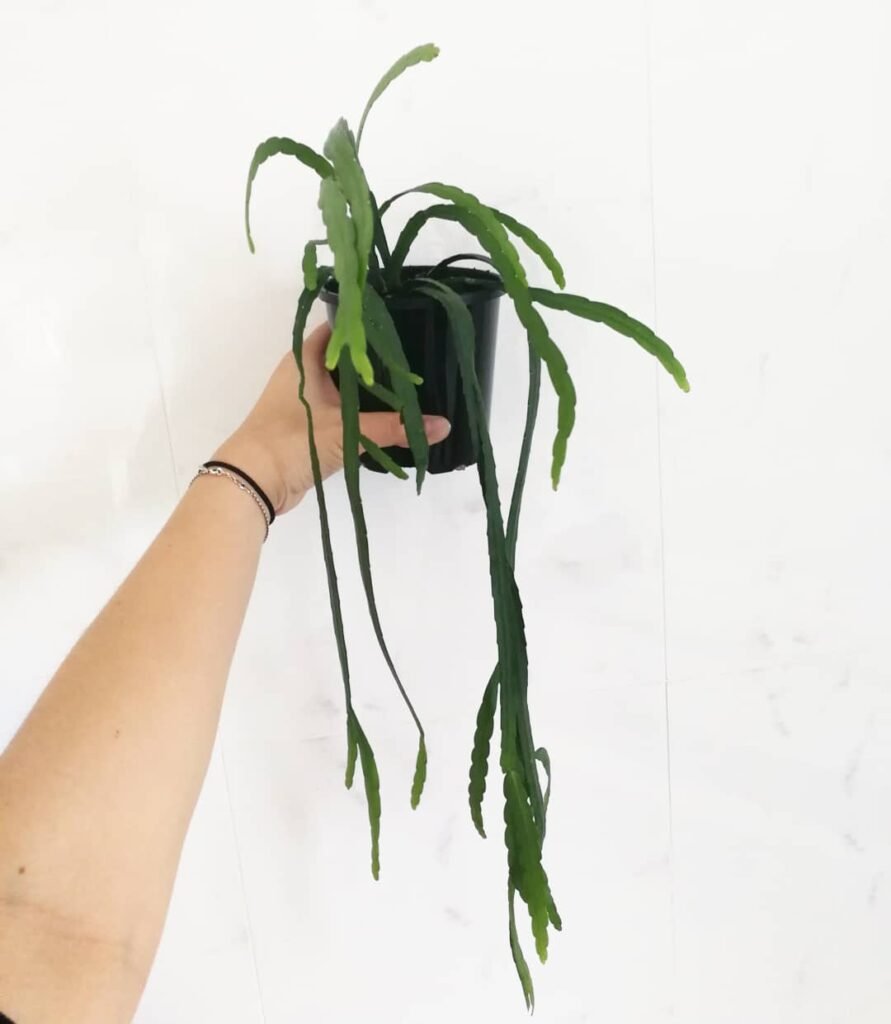

Caring for your Lepismium bolivianum, known as the Forest Cactus, involves straightforward pruning and maintenance to keep it looking splendid and healthy. Here are some simple steps to follow:
- Removing Yellow or Dying Leaves: It’s natural for some leaves to turn yellow or die off. To maintain the plant’s health and appearance, carefully remove these leaves. Always use clean, sharp utensils or shears, making sure not to damage the healthy parts of the plant. This helps keep your cactus looking vibrant and prevents any potential harm to its growth.
- Regular Pest Control Checks: Keep a regular check for pests like mealybugs and scale, which might hide in the stem crevices of your cactus. Early detection is crucial for effective control. If you spot any pests, act quickly to remove them using environmentally friendly methods. For serious infestations, consulting with a professional may be the best course of action.
By incorporating these practices into your routine, you can ensure your Lepismium bolivianum remains a healthy and beautiful feature in your indoor garden. Remember, a little attention goes a long way in the care of this unique tropical plant.

Propagating Lepismium bolivianum (Forest Cactus)
If you’re looking to expand your collection of Lepismium bolivianum or share this beautiful forest cactus with friends, propagating it through stem or leaf cuttings is a great option. Follow these simple steps to successfully propagate your Lepismium bolivianum:
- Choose healthy cuttings: Select stem or leaf cuttings from a healthy Lepismium bolivianum plant. Make sure the cuttings are free from any signs of damage or diseases.
- Allow the cuttings to callus: After taking the cuttings, let them sit in a cool, dry place for a few days until they develop calluses. This helps protect them from rotting once planted.
- Prepare the soil: Set up a pot with moist soil. Lepismium bolivianum prefers a well-draining cactus and succulent potting mix.
- Plant the cuttings: Place the callused cuttings on top of the soil, making sure they have good contact. You can insert the cuttings slightly into the soil if needed.
- Provide ideal conditions: Put the pot in a warm and humid location that receives indirect light. A bright corner of your house or a greenhouse can be suitable. Avoid direct sunlight, as it can harm the delicate cuttings.
- Wait for roots to develop: It may take several weeks for the cuttings to develop roots. Be patient and keep the soil lightly moist during this period.
- Treat as normal houseplants: Once the cuttings have rooted, treat them as you would any other Lepismium bolivianum plant. Maintain their care routine, including proper watering, lighting, and fertilization.
Propagation can be a rewarding experience as you witness new plants growing from your efforts. By following these simple steps, you can easily propagate Lepismium bolivianum and expand your collection of these stunning tropical houseplants.

Repotting Tips for Lepismium bolivianum
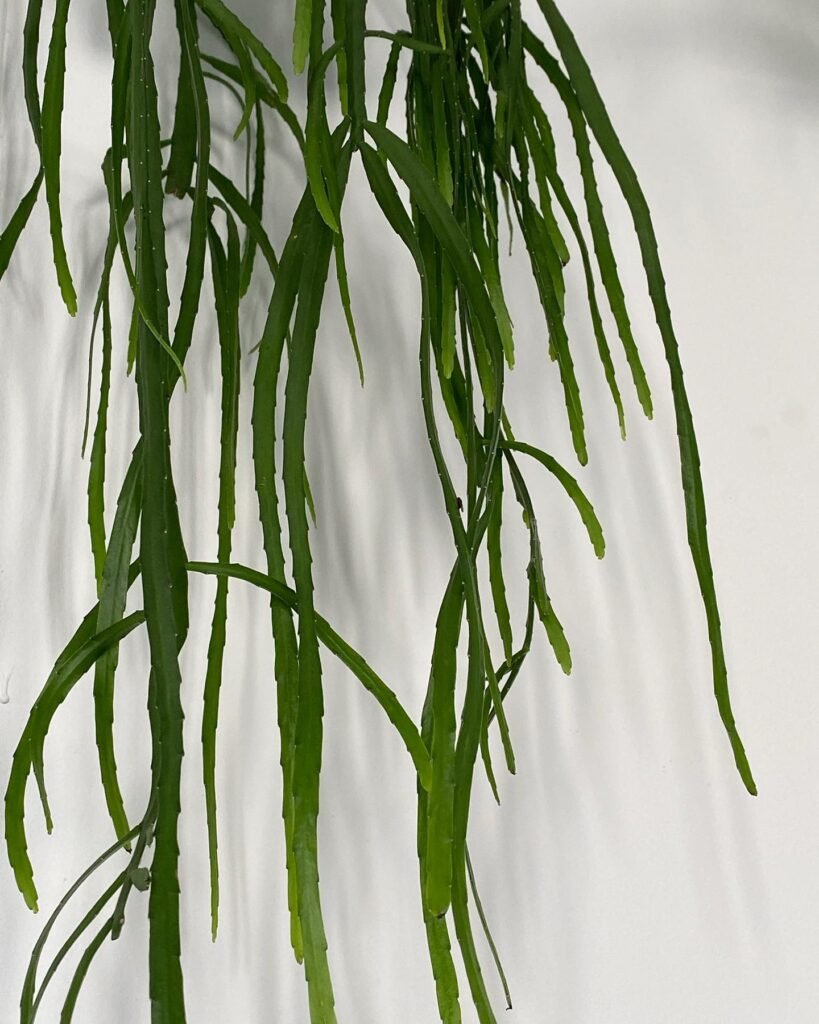
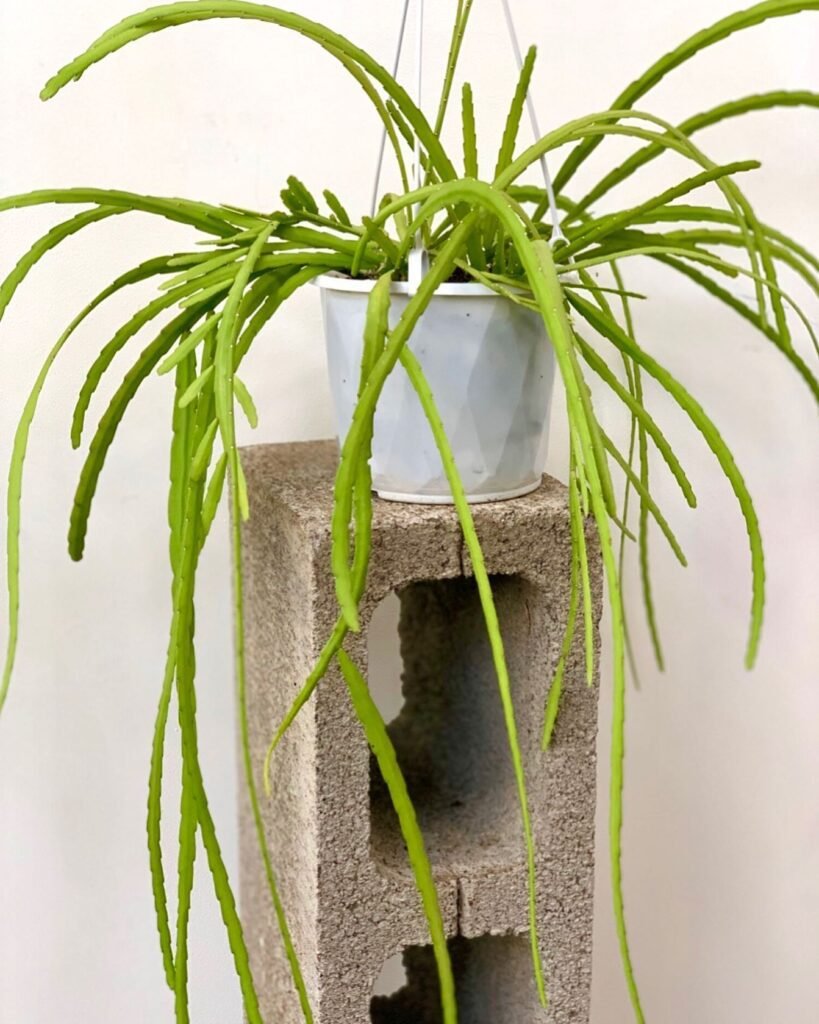
Repotting your Lepismium bolivianum, known as the Forest Cactus, is a key part of its care regime, usually necessary every three to four years. Here’s how to repot your plant effectively to promote its health and growth:
- Choosing the Right Pot: It’s vital to pick a pot with adequate drainage holes to allow excess water to escape, thus preventing waterlogged conditions that could lead to root rot. The pot should also offer sufficient space for the plant’s roots to expand.
- Using the Right Potting Mix: Standard potting soil isn’t suitable for Lepismium bolivianum. Instead, choose a cactus and succulent potting mix, designed to provide the well-draining environment this plant thrives in. The mix should be loose and airy, facilitating easy water flow.
- Proper Placement in the Pot: When repotting, make sure the Lepismium bolivianum isn’t planted too deep. The top of the root ball should be level with, or slightly above, the surface of the soil. Too deep a placement can cause water to accumulate around the stem, increasing rot risk.
- Keeping the Plant Slightly Pot-Bound: This plant prefers to be slightly pot-bound, which helps encourage healthy root development and prevents the soil from retaining too much moisture. However, the pot shouldn’t be so small that it restricts future growth.
- Choosing the Right Time for Repotting: Spring is the ideal time for repotting, coinciding with the plant’s active growth phase. Repotting at this time provides a fresh start and supports vigorous growth throughout the season. It’s best to avoid repotting during the colder months when growth naturally slows.
Following these guidelines will help you create the ideal environment for your Lepismium bolivianum, fostering a condition where it can flourish and bring a vibrant touch of greenery to your indoor garden.
 The Forest Cactus (Lepismium bolivianum) not only dazzles with its lush, draping greenery but also freshens the air in your home. Easy to look after and adaptable to less sunny spots, it’s brilliant for beginners and doubles as a green purifier, making any room healthier and more vibrant.
The Forest Cactus (Lepismium bolivianum) not only dazzles with its lush, draping greenery but also freshens the air in your home. Easy to look after and adaptable to less sunny spots, it’s brilliant for beginners and doubles as a green purifier, making any room healthier and more vibrant.
Frequently Asked Questions about Lepismium bolivianum (Forest Cactus)

As a popular indoor cactus plant, Lepismium bolivianum, commonly known as the Forest Cactus, can raise some questions about its care, propagation, and potential toxicity. Here are some frequently asked questions about Lepismium bolivianum:
Lepismium bolivianum is a tropical cactus known for its distinctive flat, fleshy foliage and trailing growth. It’s a popular choice for indoor hanging baskets, appreciated for its unique appearance.
A Forest Cactus thrives in bright, indirect sunlight. It’s best to avoid direct, harsh sunlight to prevent leaf burn, ensuring the plant’s vibrant health.
This cactus prefers temperatures between 15°C and 25°C. During winter, it’s important to protect it from cold draughts to maintain its well-being.
Water your Forest Cactus when the top inch of soil feels dry. In winter, reduce watering frequency to prevent overwatering and potential root issues.
Yes, for optimal growth, use a well-draining cactus or succulent mix. This prevents root rot and supports the plant’s health.
Fertilise your Forest Cactus with a diluted cactus fertiliser every four weeks during its growing season, which is spring and summer, to support its growth.
Prune by trimming away any yellow or damaged leaves with clean scissors. This keeps the plant looking tidy and healthy.
Yes, with adequate care and the right environmental conditions, Lepismium bolivianum may produce small, pinkish-white flowers indoors.
Repot in spring every few years using a pot with good drainage and fresh cactus mix to refresh the soil and encourage growth.
Be vigilant for mealybugs and scale insects. You can wipe them off with a damp cloth or use an appropriate insecticide for control.
Signs of overwatering include yellowing leaves, soft spots on the stems, and a musty smell, which could indicate root rot.
While it prefers bright light for optimal growth, it can tolerate lower light levels, albeit with slower growth and potentially fewer flowers.
No, it’s generally considered non-toxic to cats and dogs, making it a safe addition to pet-friendly homes.
Increase humidity by placing the plant on a pebble tray with water or misting it occasionally, especially beneficial in dry environments.
Unlike most cacti, Lepismium bolivianum lacks spines and features flat, cascading foliage, making it distinct in appearance.
It’s best grown indoors in the UK due to the climate. However, it can enjoy a warm, shaded spot outside during the summer.
Red leaves can indicate too much direct sunlight. Relocate your plant to a spot with bright, indirect light to avoid stress.
A leggy appearance often results from insufficient light. Move it closer to a light source and consider pruning for a bushier growth.
Address root rot by removing the plant from its pot, trimming any black or mushy roots, and repotting in fresh, well-draining soil.
While seed propagation is possible, it’s more straightforward and quicker to propagate through stem cuttings, especially for beginners.
Leaf drop can be a symptom of overwatering or underwatering. Check the soil’s moisture level and adjust your watering practices as needed.
These FAQs should provide answers to some common queries about caring for Lepismium bolivianum. Should you have any further questions or concerns, please don’t hesitate to leave them in the comments; I’ll be more than happy to answer.

